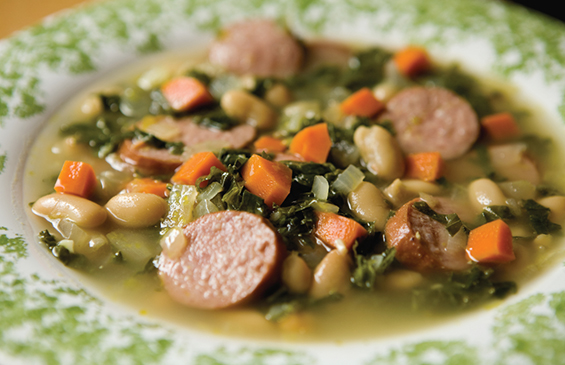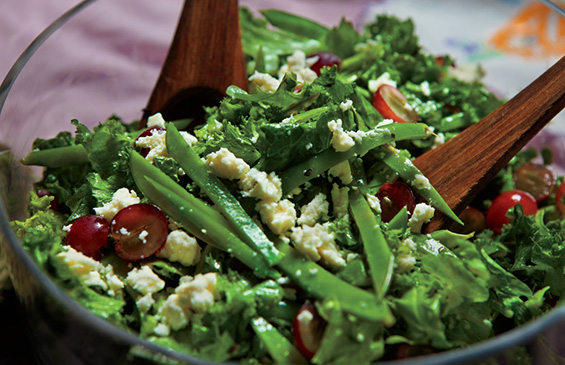Home > Lifestyle > Eats & Drinks > What’s in Season: Kale
What’s in Season: Kale
 Anybody who is anybody seems to be eating kale these days. From celebrities to health gurus, everyone is embracing these lacey leaves.
Anybody who is anybody seems to be eating kale these days. From celebrities to health gurus, everyone is embracing these lacey leaves.
Kale Benefits
If dietitians have a darling vegetable, it has to be kale. Swiftly becoming trendier than its fellow cruciferous vegetables like broccoli or cabbage, kale can be counted on for some unsurpassed health benefits, if for no other reason than its exceptional nutrient richness. It contains:
- Antioxidant and anti-inflammatory nutrients
- Much-needed micronutrients (in which the average U.S. adult is currently deficient)
- Cancer-preventive nutrients called glucosinolates
- An astounding 134% of your daily vitamin C
- An equally impressive 133% of your daily vitamin A
See more: Herbs for Health: The Benefits Growing in Your Garden
Growing Kale
Even the most inexperienced gardener should be able to cultivate a successful crop of kale. Planted in the fall or late summer, kale is a hearty green that can withstand chillier temperatures.
Kale can be grown from seed or transplants. It prefers full sun, but will also grow in partial shade. Fertile soil will ensure tender leaves and optimum growth, and mulching with compost and other organic matter will help prevent weeds.
Plants or seeds should be planted about 18 to 24 inches apart and require about 1 to 1.5 inches of water a week.
The fruits of your labor can be harvested when the leaves are about the size of your hand.
Choosing and Storing Kale
Choosing the best bunch and storing it properly is important to the success of your dish.
- Look for firm, deeply colored leaves and moist, hardy stems.
- The leaves should look fresh with no wilting and be free from signs of browning, yellowing and small holes.
- Choose kale with smaller-sized leaves since these will be more tender and have a milder flavor than those with larger leaves.
- To store, place in a plastic bag, removing as much of the air from the bag as possible.
- Kale will keep in the refrigerator for five days, but the longer you keep it, the more bitter its flavor becomes.
- Do not wash kale before storing because exposure to water encourages spoilage.
Preparing Kale
Before you start cooking with kale, make sure to prepare it properly:
- Rinse leaves under cold running water.
- Chop leaf portion into half-inch slices and the stems into quarter-inch lengths for quick and even cooking.
- You can steam or sautée kale with garlic and onions, or simply chop and serve it raw in a salad.
See more: What’s in Season: Mushrooms
Because of its impressive health benefits, many have found new uses for kale and have begun incorporating the veggie into a wide range of dishes from salads and entrees to breakfast smoothies. Check out these recipes featuring this popular superfood:
Recipes
Kielbasa and Kale Soup
Mixed Greens With Snow Peas, Grapes and Feta
Sauteed Kale and Garlic
Sources: webmd.com/food-recipes, .onegreenplanet.org, bonnieplants.com, organicgardening.com







